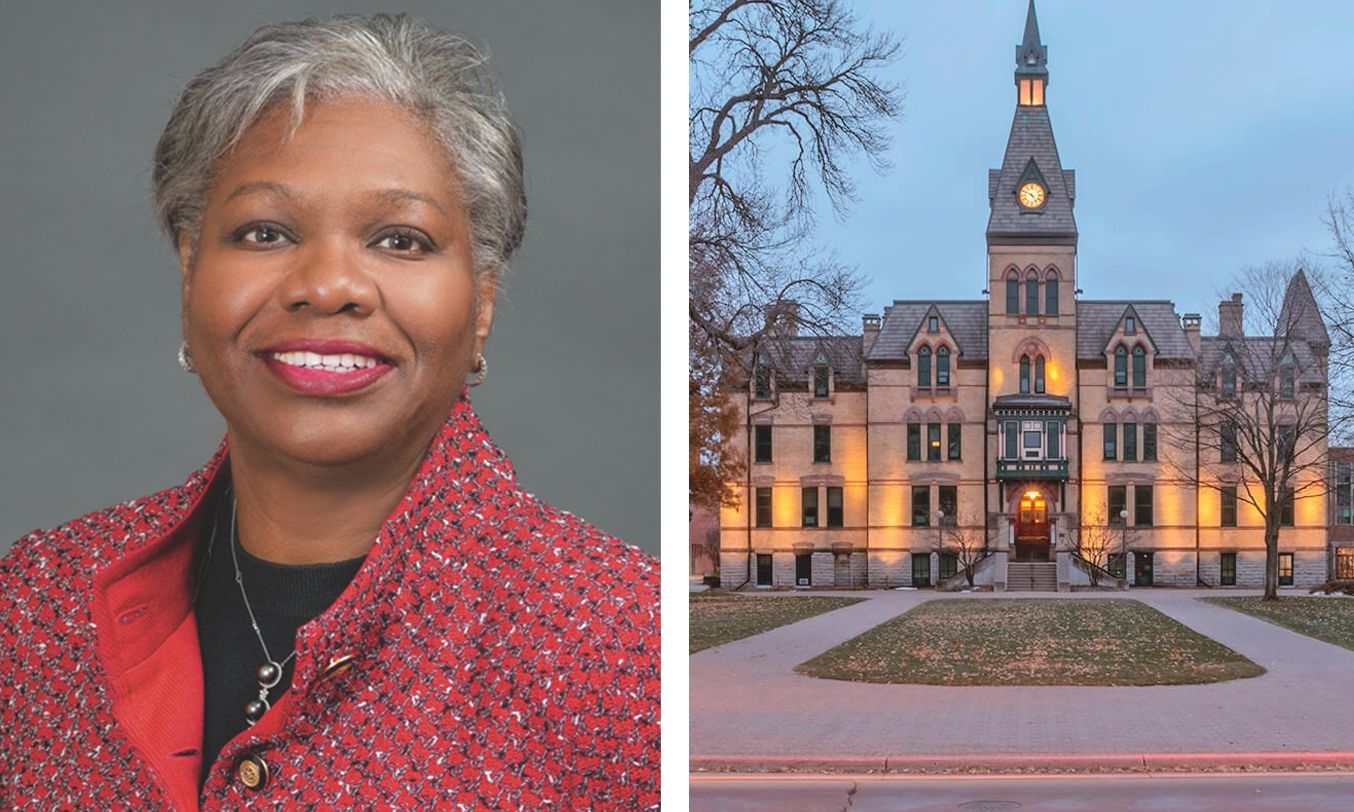Faculty at Hamline University are calling for the resignation of Fayneese Miller Images courtesy of Hamline University
Following months of charged debate at Hamline University in Saint Paul, Minnesota over the dismissal of an art history professor for showing depictions of the Prophet Muhammad in a class last year, the college's faculty have demanded the resignation of its president Fayneese Miller for mishandling the issue.
Hamline academic staff met yesterday on campus to vote in favour of Miller tendering her resignation immediately. The motion passed with a majority of 71 to 12 and eight abstentions, or 86% of the vote, according to the US publication the Nation; around 70% of the university's 130 full-time faculty attended the meeting. "We no longer have faith in President Miller's ability to lead the university forward," reads a statement signed by Hamline's full-time faculty, which goes on to "defend the right to academic freedom" and "reject unfounded accusations of Islamophobia".
The decision by Hamline administrators to not renew the contract of the former adjunct professor Erika López Prater after she showed two historic depictions of the Prophet, has been met with national outrage and a media firestorm. A number of leading Islamic scholars, as well as independent groups concerned with censorship in academia, have decried the move for its worrying implications over free speech. Prater is now suing the university for religious discrimination and defamation.
The internal call for Miller's resignation comes one week after the university, in a volte-face, retreated on its decision to dismiss Prater via a statement on 17 January, signed by Miller and Ellen Watters, the chair of Hamline's board of trustees. "Like all organisations, sometimes we misstep," the board says, continuing that their use of the term "Islamophobic" to describe Prater's actions was "flawed" and does not reflect their sentiments on academic freedom. They add that their actions were made to "hear" and "support" Muslim students at the university.
Prater's decision to show the images was brought to the attention of Hamline's administrators via a formal complaint made by a group of Muslim students, one of whom told Hamline's student newspaper that the incident made her feel like she was not respected by the university.
Indeed, calls for Miller's dismissal, while seemingly shared by the majority of Hamline's staff, are also receiving pushback. According to Sahan Journal, a number of Muslim students support Miller and her actions and fear for what will happen if she leaves. “While we have been getting threats and targets on our backs, what hurts the most is knowing our faculty members don’t care much for us,” reads an anonymous letter reportedly sent by a group of Muslim students to Hamline faculty. “Additionally, they are willing to go to the extent of going after and blaming President Miller who has been supportive throughout this difficult time.” Miller, the university's first Black president, has held the position since 2015.
Academics at Hamline have also commented that a narrative of students versus faculty has been propagated by the university in order to shift blame and focus away from senior administration and more endemic issues that have long-plagued the university. “Our administration overcompensated for a history of dismissing and minimising and sweeping under the rug numerous incidents on our campus that are racist, Islamophobic, sexist. Specifically, towards students of colour who are Muslim," a professor told the Nation.
Miller's resignation can only be effected by the board of trustees. Hamline University could not be reached for a comment on the matter by time of publication.

